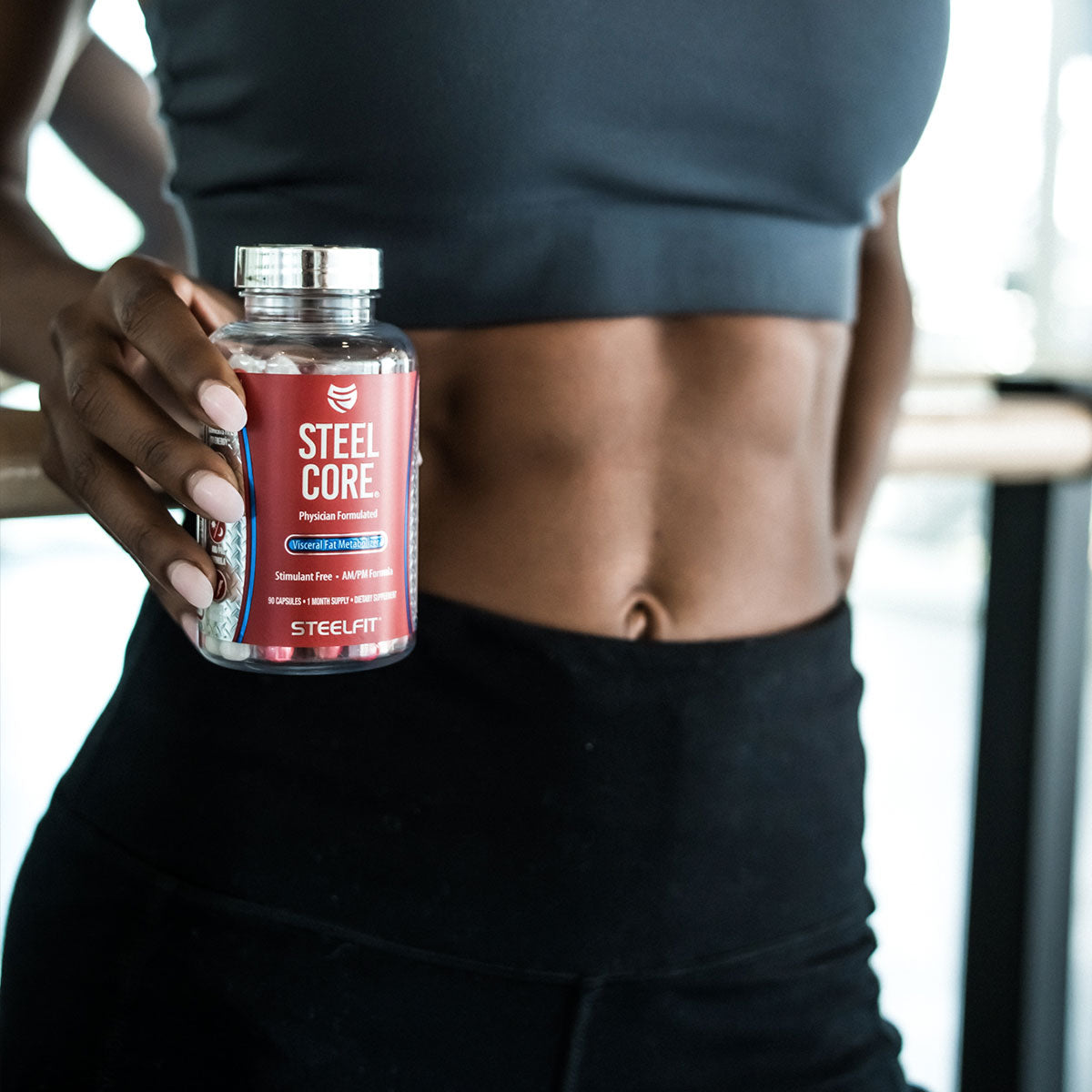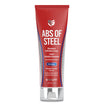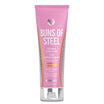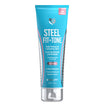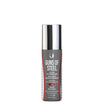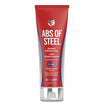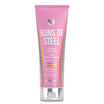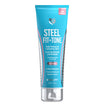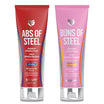One of the oldest myths in the world of fitness and nutrition is that eating fat inevitably makes you fat. This fat phobia took hold of people for decades, which led to a surge of high-carb, low-fat “foods” that contained little else besides refined carbohydrates and cheap sugars.
And while the public lowered their consumption of dietary fat, obesity rates continued to climb.
As it turns out, dietary fat isn't the foe it was wrongly portrayed to be, and recent research has shown that not only is fat not bad for us, it's good for us and essential.
We’ve got a list of our top 9 high-fat foods that are packed with nutrition and can do a body good!
Nine High-Fat, Healthy Foods
Fatty Fish
Fatty fish like salmon, trout, mackerel, and sardines are chock-full of heart-healthy omega-3 fatty acids. They're also rich in dietary protein and several vital micronutrients. Omega-3s have been noted to help reduce triglyceride levels, decrease the risk of arrhythmia, lower inflammation, and improve blood pressure. <1,2,3> Other research indicates that individuals who consume fish regularly are associated with greater health and have a significantly lower risk of several chronic diseases, including dementia, depression, and cardiovascular disease. <4,5>Avocado
Avocados are one of the few fruits on earth that are packed with high-quality monounsaturated fats. Over 75% of the calories in an avocado are from fat -- that's higher than some animal foods! Though avocados may be high in calories, research indicates that people who eat more avocados generally have less belly fat and weigh less than individuals who don't regularly consume them. <6> The reason that avocados support weight loss (aside from their high fiber content) is that they contain a specific monounsaturated fat called oleic acid, which has been noted in some research to help reduce feelings of hunger. <7> This game day favorite is also loaded with essential vitamins and minerals, including potassium. And it’s even got protein and a generous serving of fiber, too! As you're well aware, avocados make an excellent gameday dip (guacamole), but they can also make an excellent sandwich spread, eliminating the need to use mayonnaise. With this simple swap, you'll save calories and get a considerable boost in micronutrient intake.Nuts
When you're looking for the perfect, portable, no-prep required snack, you need to look no further than the extensive family of nuts. Nuts are incredibly healthy and packed with micronutrients. In addition to supplying generous amounts of fats and fiber, nuts are also rich in magnesium and plant-based protein. Several research trials indicate that nut consumers are generally healthier and have a lower risk for several chronic diseases, including type 2 diabetes, cardiovascular disease, and obesity. <8,9,10> A few of our favorite nuts are:- Walnuts (also high in omega-3s)
- Pecans
- Almonds
- Pistachios
- Macadamia Nuts
- Brazil Nuts (great source of selenium!)
Eggs
Touted as the "ideal" human protein, eggs are nutrition powerhouses that not only supply a robust shot of highly bioavailable protein, but they also teeming with essential micronutrients. Chief among these important micronutrients is choline -- a compound necessary for optimal brain development and the biosynthesis of two essential phospholipids (phosphatidylcholine and sphingomyelin) which are needed to create cell membranes. <11> Choline is also needed to produce the neurotransmitter acetylcholine, a.k.a. the “learning” transmitter, which is involved in learning, memory, and the mind-muscle connection. <12> While eggs used to be feared for their high fat and cholesterol content, new research indicates that the cholesterol in eggs does not affect blood cholesterol levels in the majority of individuals. <13,14> Scrambled, poached, baked, hard-boiled, or over easy, eggs are the ultimate quick fix meal and can also serve as a great on-the-go snack to pair with your serving of nuts.Seeds
Similar to nuts, seeds are another pint-sized nutritional powerhouse as they contain generous amounts of plant-based protein, fiber, and fats. Of particular note are chia seeds and flax seeds which contain a type of omega-3 fatty acid called ALA. Omega-3 fatty acids have been extensively studied and noted to help support weight maintenance, combat inflammation, and promote cardiovascular health. <29,30> Research into the benefits of chia seeds also finds that they may help reduce blood pressure and offer anti-inflammatory benefits, too. <31,32>Coconut
Coconuts (as well as coconut oil) are one of the densest sources of saturated fat you’ll find. While this might sound alarming at first, take a deep breath. The majority of fat content in coconuts is in the form of lauric acid, a medium-chain triglyceride (MCT). MCTs are a special type of fat that is metabolized differently in the body than other types of fats as they can provide a type of fast-burning fuel, similar to that offered by glucose. MCTs also stimulates the liver to produce ketone bodies (like BHB) and have been noted in research to help boost metabolism (as much as 120 calories per day) and reduce appetite. <16,17> One other fascinating study also found that consumption of coconut oil helped reduce belly fat. <18>Cheese
Cheese is an excellent source of protein, calcium, and dietary fat. It's filling, tastes delicious, and also helps slow the digestion of carbohydrates (as do other foods high in protein and fat). Besides calcium, cheese is also rich in vitamin B12, phosphorus, and selenium. Consuming full-fat cheese may also help lower your risk of diabetes. Research in the American Journal of Clinical Nutrition found that individuals who consume high-fat dairy products had the lowest rates of diabetes.<19> Moreover, people who consumed more low-fat dairy products had higher incidence rates of the disease. Researchers theorized that the fat in cheese is needed to help absorb the beneficial micronutrients in cheese (calcium, vitamin D, etc.).Yogurt
Up next is another full-fat dairy product that is generally consumed in its low-fat or fat-free form -- yogurt. Similar to cheese, yogurt is high in muscle-building protein (including whey and casein), calcium, and other micronutrients, but it also contains another set of incredibly beneficial compounds not commonly found in cheese -- probiotics. Probiotics are good bacteria that help maintain a healthy microbiome, fortify the lining of the gut, and support both immune and cognitive function. <20> Studies show that yogurt improves digestive health, and may also help combat obesity and cardiovascular disease to help fight heart disease and obesity. <21,22> Additional research indicates that yogurt may help reduce overall food intake, most likely due to its high protein content. <23> Whole-milk (full-fat) yogurts generally have more protein and fat than their low-fat or no fat alternatives, which is great if you’re trying to increase satiety as protein and fat tend to lead to greater feelings of fullness. Plus, low-fat or fat-free yogurts are often loaded with added sugars, stabilizers, and thickeners to make up for the taste and texture lost when fat is removed. If you want to maximize your protein intake from yogurt, opt for Greek yogurt, which has more protein per serving than regular yogurt.Dark Chocolate
Is there any better dessert than a big piece of high-quality dark chocolate?! It’s rich, luxurious, and a little bit goes a long way. But besides its decadent, palate-pleasing flavors, dark chocolate is also high in fat and rich in micronutrients and antioxidants! More specifically, dark chocolate contains over half the RDA for copper, magnesium, manganese, and iron. Regarding its antioxidant powers, dark chocolate contains high levels of polyphenols, including epicatechin, catechin, and procyanidins, which may help combat free radicals, enhance blood flow, and support cardiovascular health. <24,25> New studies find that polyphenols in dark chocolate may also help improve mood and cognitive function.< 26,27] Epidemiological research also notes that individuals who eat dark chocolate at least five times per week are less than half as likely to die from cardiovascular disease than those who do not eat dark chocolate. 28> When sourcing dark chocolate, make sure to get one that’s at least 70% cocoa. Lighter chocolates contain less cocoa and higher amounts of sugar and fat.Takeaway
Fat was unfairly demonized for decades, yet consuming sufficient amounts of dietary fat are vital for optimal health and wellness. They are one an essential macronutrient after all. As a bonus, fat also slows digestion (which helps make you feel fuller) and makes food taste more luxurious. A well-balanced diet should include a mix of monounsaturated, polyunsaturated, and even saturated fats. But, make sure to limit (or avoid) trans fats. If you've avoided fat for far too long, check out some of the foods we've listed here and see how they can help fill out your already healthy diet.References
- Cazzola, R., Russo-Volpe, S., Miles, E. A., Rees, D., Banerjee, T., Roynette, C. E., … Cestaro, B. (2007). Age- and dose-dependent effects of an eicosapentaenoic acid-rich oil on cardiovascular risk factors in healthy male subjects. Atherosclerosis, 193(1), 159–167. https://doi.org/10.1016/j.atherosclerosis.2006.06.008
- Ramel, A., Martinez, J. A., Kiely, M., Bandarra, N. M., & Thorsdottir, I. (2010). Moderate consumption of fatty fish reduces diastolic blood pressure in overweight and obese European young adults during energy restriction. Nutrition (Burbank, Los Angeles County, Calif.), 26(2), 168–174. https://doi.org/10.1016/j.nut.2009.04.002
- Ciubotaru, I., Lee, Y.-S., & Wander, R. C. (2003). Dietary fish oil decreases C-reactive protein, interleukin-6, and triacylglycerol to HDL-cholesterol ratio in postmenopausal women on HRT. The Journal of Nutritional Biochemistry, 14(9), 513–521.
- Wang, C., Harris, W. S., Chung, M., Lichtenstein, A. H., Balk, E. M., Kupelnick, B., … Lau, J. (2006). n-3 Fatty acids from fish or fish-oil supplements, but not alpha-linolenic acid, benefit cardiovascular disease outcomes in primary- and secondary-prevention studies: a systematic review. The American Journal of Clinical Nutrition, 84(1), 5–17. https://doi.org/10.1093/ajcn/84.1.5
- Su, K.-P., Huang, S.-Y., Chiu, C.-C., & Shen, W. W. (2003). Omega-3 fatty acids in major depressive disorder: A preliminary double-blind, placebo-controlled trial. European Neuropsychopharmacology, 13(4), 267–271. https://doi.org/https://doi.org/10.1016/S0924-977X(03)00032-4
- Mennella, I., Savarese, M., Ferracane, R., Sacchi, R., & Vitaglione, P. (2015). Oleic acid content of a meal promotes oleoylethanolamide response and reduces subsequent energy intake in humans. Food & Function, 6(1), 204–210. https://doi.org/10.1039/c4fo00697f
- Fulgoni VL 3rd, Dreher M, Davenport AJ. Avocado consumption is associated with better diet quality and nutrient intake, and lower metabolic syndrome risk in US adults: results from the National Health and Nutrition Examination Survey (NHANES) 2001-2008. Nutr J. 2013;12:1. Published 2013 Jan 2. doi:10.1186/1475-2891-12-1
- Jackson CL, Hu FB. Long-term associations of nut consumption with body weight and obesity. Am J Clin Nutr. 2014;100 Suppl 1(1):408S–11S. doi:10.3945/ajcn.113.071332
- Ros, E. (2009). Nuts and novel biomarkers of cardiovascular disease. The American Journal of Clinical Nutrition, 89(5), 1649S-56S. https://doi.org/10.3945/ajcn.2009.26736R
- Ros E. Health benefits of nut consumption. Nutrients. ;2(7):652–682. doi:10.3390/nu2070652
- "Choline." Office of Dietary Supplements (ODS), 26 Sept. 2018, ods.od.nih.gov/factsheets/Choline-HealthProfessional/.
- Hasselmo ME. The role of acetylcholine in learning and memory. Curr Opin Neurobiol. 2006;16(6):710–715. doi:10.1016/j.conb.2006.09.002
- Anna M Abdollahi, Heli E K Virtanen, Sari Voutilainen, Sudhir Kurl, Tomi-Pekka Tuomainen, Jukka T Salonen, Jyrki K Virtanen. Egg consumption, cholesterol intake, and risk of incident stroke in men: the Kuopio Ischaemic Heart Disease Risk Factor Study. The American Journal of Clinical Nutrition, 2019; DOI: 10.1093/ajcn/nqz066
- Fernandez, M. L. (2006). Dietary cholesterol provided by eggs and plasma lipoproteins in healthy populations. Current Opinion in Clinical Nutrition and Metabolic Care, 9(1), 8–12.
- Marie-Pierre St-Onge, Peter J. H. Jones, Physiological Effects of Medium-Chain Triglycerides: Potential Agents in the Prevention of Obesity, The Journal of Nutrition, Volume 132, Issue 3, March 2002, Pages 329–332, https://doi.org/10.1093/jn/132.3.329
- Dulloo, A. G., Fathi, M., Mensi, N., & Girardier, L. (1996). Twenty-four-hour energy expenditure and urinary catecholamines of humans consuming low-to-moderate amounts of medium-chain triglycerides: a dose-response study in a human respiratory chamber. European Journal of Clinical Nutrition, 50(3), 152–158.
- Stubbs, R. J., & Harbron, C. G. (1996). Covert manipulation of the ratio of medium- to long-chain triglycerides in isoenergetically dense diets: effect on food intake in ad libitum feeding men. International Journal of Obesity and Related Metabolic Disorders : Journal of the International Association for the Study of Obesity, 20(5), 435–444.
- Assuncao, M. L., Ferreira, H. S., dos Santos, A. F., Cabral, C. R. J., & Florencio, T. M. M. T. (2009). Effects of dietary coconut oil on the biochemical and anthropometric profiles of women presenting abdominal obesity. Lipids, 44(7), 593–601. https://doi.org/10.1007/s11745-009-3306-6
- Ulrika Ericson, Sophie Hellstrand, Louise Brunkwall, Christina-Alexandra Schulz, Emily Sonestedt, Peter Wallström, Bo Gullberg, Elisabet Wirfält, Marju Orho-Melander, Food sources of fat may clarify the inconsistent role of dietary fat intake for incidence of type 2 diabetes, The American Journal of Clinical Nutrition, Volume 101, Issue 5, May 2015, Pages 1065–1080, https://doi.org/10.3945/ajcn.114.103010
- https://nccih.nih.gov/health/probiotics/introduction.htm
- Morelli, L. (2014). Yogurt, living cultures, and gut health. The American Journal of Clinical Nutrition, 99(5 Suppl), 1248S-50S. https://doi.org/10.3945/ajcn.113.073072
- Astrup, A. (2014). Yogurt and dairy product consumption to prevent cardiometabolic diseases: epidemiologic and experimental studies. The American Journal of Clinical Nutrition, 99(5 Suppl), 1235S-42S. https://doi.org/10.3945/ajcn.113.073015
- Ortinau, L. C., Hoertel, H. A., Douglas, S. M., & Leidy, H. J. (2014). Effects of high-protein vs. high- fat snacks on appetite control, satiety, and eating initiation in healthy women. Nutrition Journal, 13(1), 97. https://doi.org/10.1186/1475-2891-13-97
- Taubert D, Roesen R, Lehmann C, Jung N, Schömig E. Effects of Low Habitual Cocoa Intake on Blood Pressure and Bioactive Nitric Oxide: A Randomized Controlled Trial. JAMA. 2007;298(1):49–60. doi:10.1001/jama.298.1.49
- Baba, S., Natsume, M., Yasuda, A., Nakamura, Y., Tamura, T., Osakabe, N., Kondo, K. (2007). Plasma LDL and HDL cholesterol and oxidized LDL concentrations are altered in normo- and hypercholesterolemic humans after intake of different levels of cocoa powder. The Journal of Nutrition, 137(6), 1436–1441. https://doi.org/10.1093/jn/137.6.1436
- Pase, M. P., Scholey, A. B., Pipingas, A., Kras, M., Nolidin, K., Gibbs, A., Stough, C. (2013). Cocoa polyphenols enhance positive mood states but not cognitive performance: a randomized, placebo-controlled trial. Journal of Psychopharmacology (Oxford, England), 27(5), 451–458. https://doi.org/10.1177/0269881112473791
- Giovambattista, D., Catherine, K.-U., Davide, G., Stefano, N., Lorenzo, G., Daniela, M., Claudio, F. (2012). Benefits in Cognitive Function, Blood Pressure, and Insulin Resistance Through Cocoa Flavanol Consumption in Elderly Subjects With Mild Cognitive Impairment. Hypertension, 60(3), 794–801. https://doi.org/10.1161/HYPERTENSIONAHA.112.193060
- Buijsse, B., Feskens, E. J. M., Kok, F. J., & Kromhout, D. (2006). Cocoa intake, blood pressure, and cardiovascular mortality: the Zutphen Elderly Study. Archives of Internal Medicine, 166(4), 411–417. https://doi.org/10.1001/archinte.166.4.411
- Calder, P. C. (2010). Omega-3 Fatty Acids and Inflammatory Processes. Nutrients . https://doi.org/10.3390/nu2030355
- Lee, S., Gura, K. M., Kim, S., Arsenault, D. A., Bistrian, B. R., & Puder, M. (2006). Current clinical applications of omega-6 and omega-3 fatty acids. Nutrition in Clinical Practice : Official Publication of the American Society for Parenteral and Enteral Nutrition, 21(4), 323–341.
- Toscano, L. T., da Silva, C. S. O., Toscano, L. T., de Almeida, A. E. M., Santos, A. da C., & Silva, A. S. (2014). Chia flour supplementation reduces blood pressure in hypertensive subjects. Plant Foods for Human Nutrition (Dordrecht, Netherlands), 69(4), 392–398. https://doi.org/10.1007/s11130-014-0452-7
- Vuksan, V., Whitham, D., Sievenpiper, J. L., Jenkins, A. L., Rogovik, A. L., Bazinet, R. P., Hanna, A. (2007). Supplementation of conventional therapy with the novel grain Salba (Salvia hispanica L.) improves major and emerging cardiovascular risk factors in type 2 diabetes: results of a randomized controlled trial. Diabetes Care, 30(11), 2804–2810. https://doi.org/10.2337/dc07-1144


